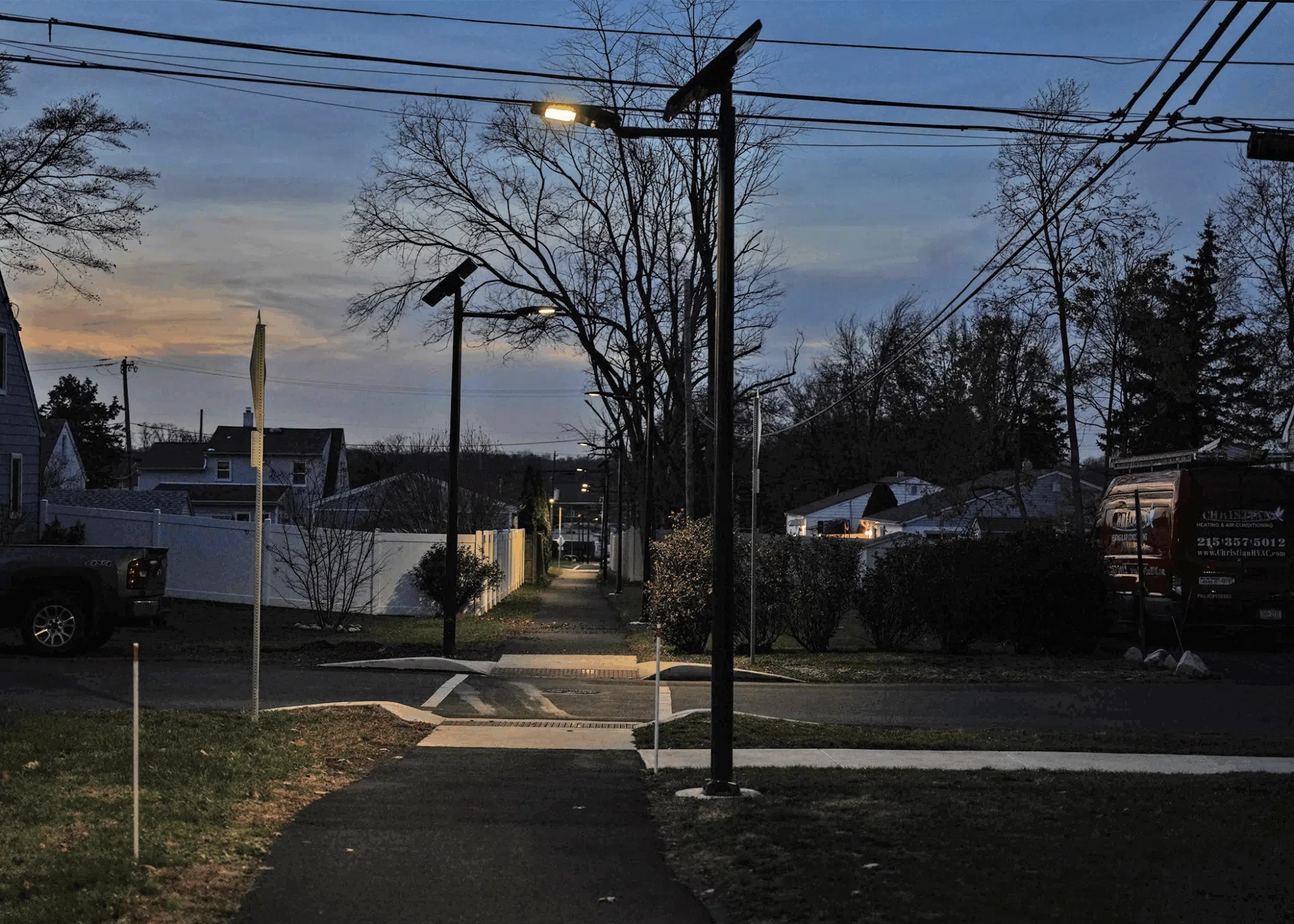Educational 23 October 2025

Each year, U.S. planners and engineers face a sobering measure of street safety: the number of people killed while walking. In 2024, drivers struck and killed 7,148 pedestrians nationwide—enough to fill 31 Boeing 737s, according to the Governors Highway Safety Association (GHSA). While that number is down 4.3% from the previous year, pedestrian deaths remain alarmingly high.
Several trends continue to fuel the problem: the growing size and height of vehicles, which limit driver visibility; distracted driving tied to smartphones and in-vehicle screens; and nighttime crashes, which account for roughly three-quarters of all pedestrian deaths. Cities and states can’t shrink vehicles or regulate personal habits (though most already restrict phone use behind the wheel), but they can redesign the spaces where people and cars meet.
Lighting—especially solar lighting—is one of the most accessible and evidence-based ways to improve road safety and save lives. Powered by renewable energy and free from the limits of wired infrastructure, solar lighting gives cities a faster, more flexible way to illuminate streets and public spaces. It’s a proven tool that helps prevent crashes, support walkability, and extend the comfort and usability of outdoor environments after dark.
Urban planners and engineers know what improves pedestrian safety: slower speeds, high-visibility crosswalks, and clearer separation between people and vehicles. Proven interventions like daylighting intersections, building protected bike lanes, and adding flashing beacons and refuge islands have helped cities like Hoboken, N.J. achieve zero pedestrian fatalities since 2017
.
Lighting belongs on that same list. It’s one of the most straightforward and high-impact tools available, yet it’s often overlooked. Research shows that good lighting can reduce nighttime pedestrian injury crashes by up to 42% at intersections, and by roughly one-third on rural and urban roadways. But not every light is a good light—it has to be designed for the people using the space, not just for the vehicles passing through it.
Most conventional streetlights weren’t designed with pedestrians in mind. They were built for drivers: tall poles, wide spacing, and optics that do a great job of illuminating asphalt… but not much else. The sidewalks, crossings, and trails where people actually move move are often left in the dark.
And when cities want to fill those gaps, the infrastructure itself can get in the way. Extending wired lighting to new sites requires trenching, conduit, and electrical connections that can take months of planning and significant investment. Once installed, these systems bring ongoing expenses for energy and maintenance, making even small safety projects difficult to deliver quickly or affordably.
Pedestrian-scale lighting flips that script. Mounted lower to the ground and closer to where people walk, it provides even, targeted illumination—vertical illuminance, if you want to get technical!—that helps drivers see and react to pedestrians sooner. Done right, it also makes streets and public spaces feel more comfortable and inviting after dark.
Solar lighting makes that kind of design practical almost anywhere. Because it operates independently of the grid, lighting can be added exactly where it’s needed—at intersections, along trails, or in new developments—without trenching, wiring, or utility coordination. For planners and engineers, that flexibility means projects can move forward faster and reach places that might otherwise be left unlit.
The conversation around pedestrian safety often centers on what’s out of local control: vehicle design, driver behavior, or federal policy. But cities, counties, and developers hold powerful, proven tools of their own—and lighting is one of the most effective among them.
By extending reliable, pedestrian-focused illumination across sidewalks, crossings, and shared-use paths, communities can make every trip safer and every public space more welcoming. And solar makes that progress faster, cleaner, and more affordable than ever.
